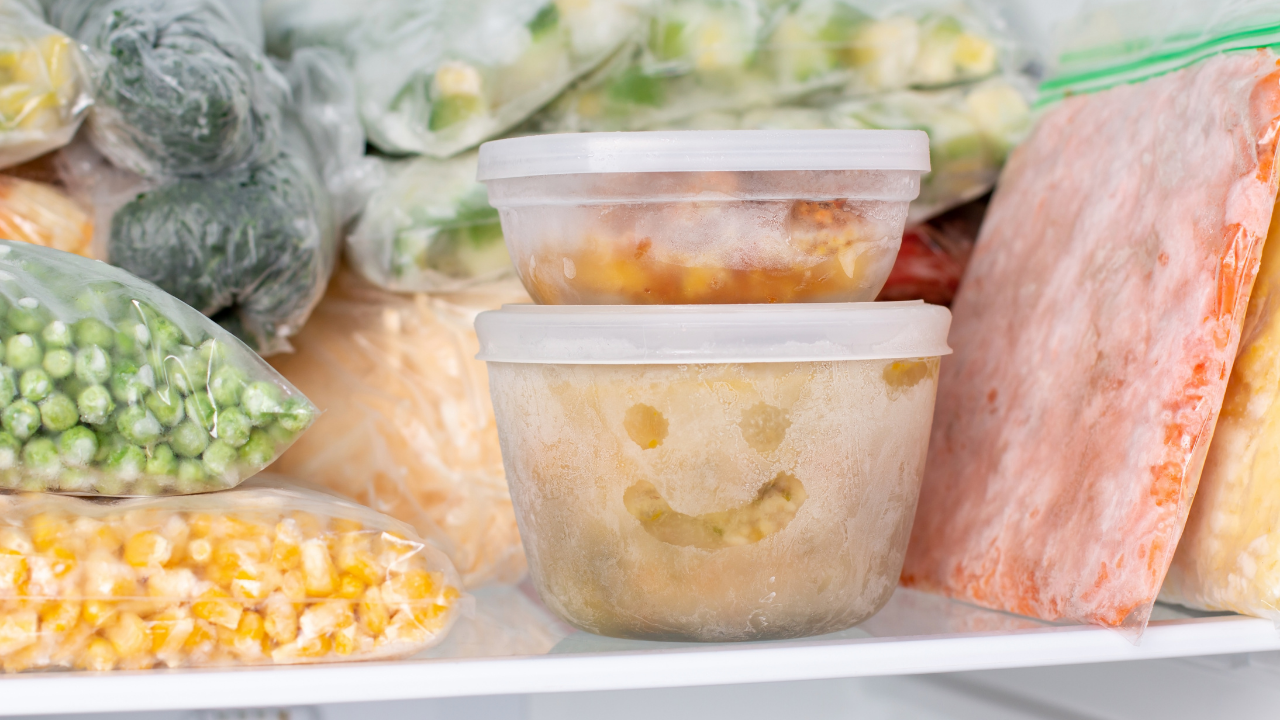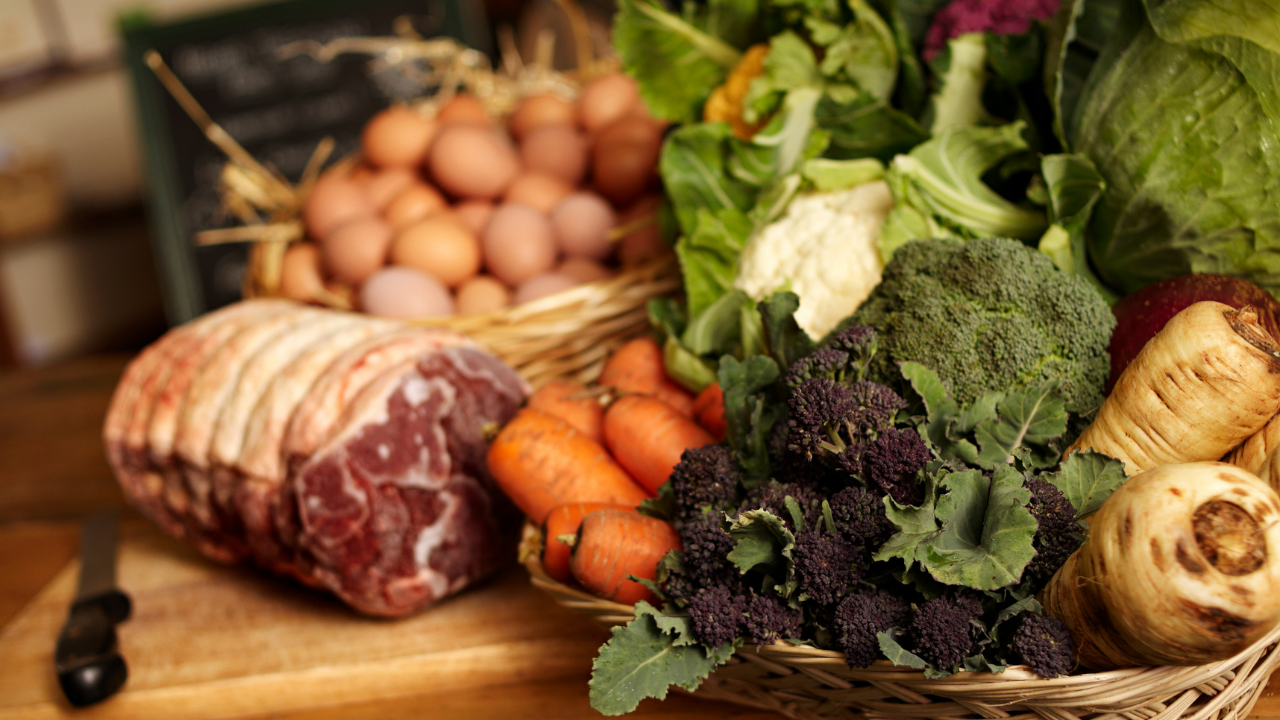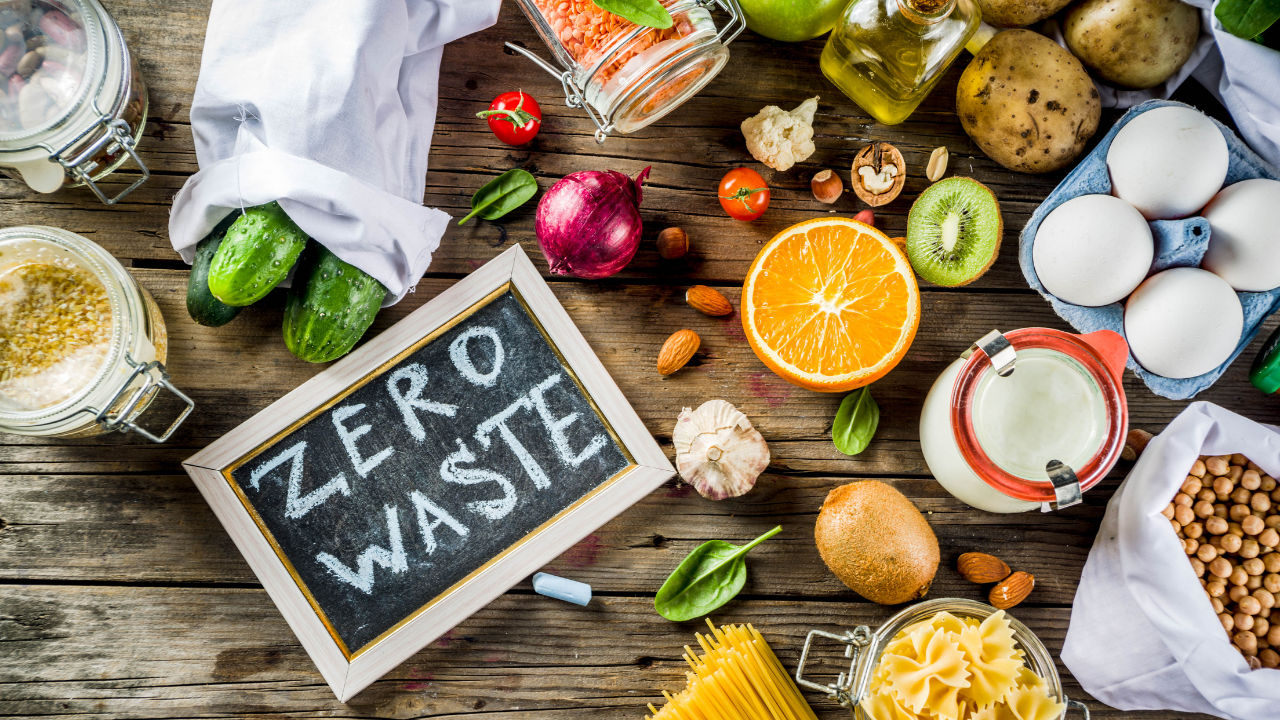10 Ways to Make Thyroid-healthy Eating More Affordable

Let's face it, healing diets can be $pendy. Cutting out affordable belly-filler like wheat flour can put the hurt on your grocery budget. Then there's the added cost of buying organic produce, pasture-raised meat, wild-caught seafood, and expensive pantry items.
The struggle is real.
According to a 2022 survey, 64% of Americans are living paycheck to paycheck. The scariest thing about that is that just a year ago, that statistic was 52%!! As I write this, inflation in the U.S. is at a 40-year high. This is a BIG problem, and while I don’t know how to fix it, I have learned a few tricks over the years to help tame the cost of organic, nutrient-dense whole foods.
Regardless of your income bracket, NOW seems like the perfect time to explore the topic of how to eat well, affordably.
In this blog post and episode of Thyroid-healthy Bites, we’re going to look at some real-world solutions to tame the cost of thyroid-healthy eating. I’ll be sharing my top 10 tips to help you stretch your food dollars further.
Disclaimer: This information is for educational and inspirational purposes only. Always consult with your doctor or other qualified healthcare providers before making changes to your diet, health care, or exercise regimen.
Podcast Links:
- Subscribe on iTunes
- Follow on Spotify
- Subscribe on YouTube
- Subscribe on Google Podcasts
- Subscribe on Amazon Music
- Listen on Stitcher
- Listen on the podcast page
Tip #1: Explore Local CSAs
CSA stands for community-supported agriculture. A CSA subscription is typically a weekly share of produce from a local farm. I’ve participated in a few of them and they all had a few things in common:
- They provided a LOT of organically grown, ultra-fresh produce that was way better than anything I could buy at the grocery store.
- They all had a designated pickup day and location located in or near my neighborhood.
- They were all amazingly affordable
- They all helped us eat seasonally, and eat more produce!
While some of you may not have access to a CSA, some of you may be surprised to find that you DO. Farms don’t exactly have big advertising budgets, so these are often word-of-mouth affairs. You can inquire locally, or check out localharvest.org to search for a CSA in your area.
Tip #2: Focus on the Dirty Dozen
It’s kind of ironic that we pay a premium for produce that was grown in a more natural way without genetic modification or the use of chemical pesticides, fertilizers, or herbicides-- i.e. organic food.
According to Scientific American, organic food really is best for thyroid-healthy eating. Researchers have found links between common pesticides and an increased risk of thyroid disease, especially among women. Also, 60% of common pesticides and fertilizers have been shown to affect the thyroid gland’s ability to produce thyroid hormones.
The old adage is true that you either pay your farmer now, or pay your doctor later. But when most American families are living paycheck to paycheck, it’s not easy to shell out 50% more for organic produce than their conventionally grown counterparts.
If eating 100% organic isn’t possible, one of the best things you can do is focus on the Environmental Working Group’s Dirty Dozen and Clean 15 lists. These lists outline the 12 conventional produce items with the highest amount of pesticides (The Dirty Dozen), and the 15 conventional produce items with the least amount of pesticides (The Clean 15). See the 2022 lists below or grab your own printable copies from EWG.

Tip #3: Purchase Healthy Whole Foods vs. "Healthy" Processed Foods
Processed “healthy” food is almost always more costly than processed “junk” food. Think of those grain-free vegan cheese puffs that go for about $5 a bag. The big-brand cheese puffs made with GMO corn and refined oils might be half the price, but neither option is the best use of your food dollar.
Instead, you could spend that $5 on a head of organic cauliflower and a sack of quinoa from the bulk section or your favorite wholesale warehouse. Cook them up, add your favorite seasonings and you’ve got a big batch of protein, fiber, and nutrient-packed pilaf you can enjoy for several meals. Better, cheaper, and more nourishing than a bag of cheese puffs any day!

Tip #4: Make Friends with Your Freezer
Because we rely more heavily on fresh food as Thyroid Thrivers (versus dry goods and pantry items), an extra freezer serves as a go-to convenience pantry. Not only can you freeze portions of the big-batch recipes you’ve made for instant thyroid-healthy meals, but you can also stock up when things are on sale and store them in the freezer.
As a money-saving investment, it might be worthwhile to consider getting a chest freezer or extra fridge & freezer. If you have the space and can find a cheap used one, this will quickly pay for itself.
The freezer can also be utilized to save money on seasonal plant foods, which can be harvested at their peak, when they’re most nutrient-dense and affordable, and then frozen. Which brings me to my next tip…
Tip #5: Buy Food That's In-Season
Buying food that’s in season is not only more nutrient-dense, it’s also cheaper. Think about the asparagus spears of January, that had to be flown in from South America, or the imported organic strawberries in February, that sell for eye-popping prices.
Eating in season can be much easier on your wallet, and also provides your body with the nutrients it needs, right when it needs them: Like the warming starchiness of winter squash in the colder months, the juicy, antioxidant-rich berries of high summer, or the cleansing greens of springtime.
In so many ways, seasonal eating just makes sense.
Not only does it help us save money on those seasonal nutrients, but it also provides an opportunity to save, by putting up food for winter during peak harvest time. Berries, greens, green beans, peas, and herbs are all examples of produce that can be bought more affordably in season and then frozen.

Tip #6: Purchase Directly From Farmers and Ranchers
For high-quality meat, consider purchasing a whole animal or half-animal directly from local farms or ranches. Like CSAs, this may require some word-of-mouth research, but you may be able to connect with someone who has a hobby farm or ranchette, and is all too happy to find buyers for their animal protein.
We've done this a few times and have gotten some of the best pasture-raised beef, bison, and lamb for way less than retail. Going in on a side or quarter of an animal with friends or neighbors is one of the best ways to get high-quality meat at the best price per pound. Anywhere you can cut out the middle man will save you $$.
At the risk of sounding like a broken record, an extra freezer will enable you to stock up on and store that high-quality meat. If you hunt or have friends who do, that extra freezer could also mean having a place to store free venison or other wild game meats that come your way!
Tip #7: Focus on Affordable Staples
If you’re one of the 64% of Americans who is living paycheck to paycheck, there are ways to incorporate healthy whole foods, without breaking the bank. Flexibility helps here; perfectionism, not so much.
As always, which foods work for you depends on you and your unique needs, but there are a few best-buys and swaps that are gluten-free, dairy-free, and also nutrient-dense.
Consider these budget-friendly staples:
- Starchy veggies can be affordable, filling, and have a long shelf-life. Favorites include yams, carrots, beets, frozen peas, winter squashes, and (if you tolerate nightshades) white potatoes.
- Some of the most affordable, non-starchy veggie options that are okay to buy non-organic (according to EWG’s Clean Fifteen List) are onions, cabbage, broccoli, and cauliflower. Other affordable non-starchy fresh veggie options include zucchini, cucumber, lettuce, and hearty greens.
- Frozen veggies are just as nutritious as fresh, sometimes moreso because they’re harvested at their nutritional peak. They last a long time, can be purchased in bulk, and are often cheaper than their fresh counterparts. Favorite frozen veggie options include peas, carrots, cauliflower, green beans, spinach, and kale.
- Consider canned, bone-in salmon or sardines vs. fresh fish. Both canned salmon and sardines are excellent options that provide lots of protein, healthy fats, and essential minerals.
- Nuts, seeds, and nut butters are a good source of healthy fats, protein, and key nutrients, and can often be found in bulk at wholesale retailers.
- Consider organ meats. When it comes to getting the most nutritional bang for your buck, few foods compare to liver and other organ meats.
- Ground meat and poultry are easy to use, versatile, freeze well, and often come at a significantly lower price per pound than individual cuts.
- If you can tolerate them, consider dried beans and lentils (i.e. legumes) which are excellent and affordable sources of protein, fiber, and other nutrients. The one exception for Thyroid Thrivers are soybeans, which leading experts recommend avoiding for optimal thyroid function.
- If you can tolerate them, gluten-free grains can be a filling and affordable staple. Favorites include rice, quinoa, and gluten-free oats.
- Combine GF grains and legumes to create a complete protein, like those that more expensive animal proteins provide. When beans or lentils are combined with rice, for example, all 9 essential amino acids are present, making it easier for your body to utlize and turn into protein.
NOTE: Many if not all of these staples are covered by both WIC and SNAP programs.

Tip #8: Take an Honest Look at Your Budget
While money is a very real roadblock for some of us, it’s also one of our favorite excuses as humans, right along with time. “I can’t afford that,” and “I don’t have time for that,” are phrases that very conveniently let us off the hook from finding solutions that work.
If you’re driving through Starbucks every morning, for example, while at the same time saying that you can’t afford to prepare yourself a healthy, whole-foods meal at night, that’s worth taking a second look at.
How about alcohol, soda, or juice? Now there's a place where many of us can save our money for fresh whole foods that support our health, in place of beverages that only chip away at it.
If you do catch yourself getting hung up on one of these limiting beliefs, congratulations! You’re human! Don’t waste your precious energy condemning yourself. We all face limiting beliefs sometimes. But do yourself the favor of having an honest look at your budget.
Is cooking and eating healthy whole food really not possible, or simply not a priority? Are there small tweaks you could make to align your spending habits with your desire for optimal health? You might be surprised at the answers you find.
Tip #9: Shop in Bulk
Places like Costco, Sam’s Club, or even restaurant supply stores can be a treasure trove of wholesale food savings. The tricky thing is that you don’t always know what these stores going to have in stock.
I occasionally shop at Costco and find that they consistently have a TON of organic produce, organic animal protein, and organic pantry products. I occasionally use Costco to stock up on organic meats for the freezer, such as packs of organic ground bison, chicken breasts, chicken thighs, or organic ground turkey.
There is one pitfall with buying in bulk though: food waste. Be careful buying perishables in bulk from places like this. If you don't have a plan to use them up, they can easily end up in the trash. I’ve learned this one the hard way.
This brings me to my final tip…

Tip #10: Practice Zero-waste Cooking
According to the United Nations, 1.3 billion tons of food is wasted globally each year. In America, 30 - 40% of our annual food supply is thrown away. This has a tremendous environmental and societal price tag, and of course, a monetary price tag. Those wasted food dollars could go towards buying higher-quality food!
When we make the shift from buying cheap, processed food to high-quality, nutrient-dense, organic food, one of the benefits is that we start to value our food more. Part of this means throwing as little of it away as possible.
View this post on Instagram
There are countless ways to practice zero-waste cooking, but the basic idea is that we adopt habits around shopping and cooking that minimize waste. Putting just a little extra attention and intention towards reducing food waste can make a big difference in your food budget.
Practical ways to reduce food waste:
- Make a weekly meal plan. When you know what’s on the menu, and plan your grocery trips around that, you can reduce perishable food waste and mealtime stress!
- Store leftovers in clear containers where you can see what’s inside and more easily remember to use them up! Ideally, use glass to avoid toxin exposure from plastics.
- Learn a few basic cooking skills so that you have the confidence to take those bits and bobs in the fridge and throw together a “clean-out-the-fridge” salad, GF pasta dish, skillet hash, or stir-fry.
- Space out your shopping trips an extra day or two, to give yourself time to use up those perishable items before buying more.
- Freeze bones and veggie scraps for bone broth. Not only is broth one of the most healing, comforting, nourishing, versatile, and delicious foods there is, it’s a mainstay in any zero-waste kitchen. Things like carrot peels, onion skins, celery leaves, leek tops, mushroom stems, and of course, bones can be stashed away in the freezer for the next time you make a pot of bone broth. We always keep a bones-and-scraps bag in the freezer. When it’s full, it either goes into the chest freezer for later or into the stockpot!

How I Apply These Principles in Real Life
I admit, that as a family, we eat very well. First, my husband and I both love to cook and eat, and now our son is also showing glimmers of being a junior foodie. Our enjoyment of food and cooking definitely fuels our food spending!
Please, keep in mind that I am “Hypothyroid Chef.” This is both my livelihood and my life. It’s something I put a lot of thought and energy into. I’m not trying to set the standard or suggesting you put the same amount of energy towards it that I do. This is just a snapshot of our one little family, and how we approach the modern-day beast of eating well in spite of rising food prices. Take from it only positive vibes and inspiration.
Much of what we’re able to put on the table is reflective of where we live. Here in Western Montana, in spite of a short growing season, we have an abundance of local farmers and ranchers who are passionate about producing good food.
As a family, food is a top priority for us when it comes to our household budget. We know and believe in the power of food, and in the dollars we spend on it. We value supporting local farmers and ranchers, and we value supporting organic growing practices that are better for both our bodies and the planet.
While we may spend more on food than some of our peers, we also spend less on other things. We pull our own weeds, mow our own grass, scrub our own toilets, and mop our own floors. Thanks to my Mr. Fixit husband, we also do a lot of our own home improvement projects (sigh…LOL). My beloved car, Lucille, is 12 years old, and some of my articles of clothing have been with me much longer than that! But food? Now that is where we choose to spend our dollars.
Having that choice is a privilege that I acknowledge. It’s also something that doesn’t happen without conversation, commitment, and effort. So, what does that look like in the real world?
I keep an eye on prices and stock up on pantry items when they’re on sale. I focus on organic produce rather than organic processed foods. I grow a small vegetable garden and try to utilize all that comes out of it, storing any surplus for the winter in our chest freezer.
I connect with and buy directly from local farmers and ranchers. We enjoy getting to know the people who grow our food and supporting our local food system. That approach has also supplied us with a lot of amazing food at a much lower cost than the retail prices at our local health foods store.
I used to enjoy the Farmers’ Market as a source of affordable organic produce, but it’s gotten too expensive and crowded for me in the last 10 years, at least in my area. Instead, for 5 months a year we get a big box of organic produce for $18/week from a local farm. This is one of those CSA subscriptions we covered back in Tip #1.
In fall, we stock up from the same farm. In October, they offer 100 pounds of organic produce for $100, and it’s a literal trunk full of food. We get bushels of organic storage potatoes, cabbage, winter squash, beets, onions, and more. We have to get creative with ways to store and use it up, but it lasts us through the winter.
I’m definitely not perfect but I do my best to avoid food waste like the plague that it is. Those glass containers are key! Otherwise, I can’t remember what bits and bobs there are to make a meal out of. Some of those “clean-out-the-fridge” dinners have been our favorite meals!
As you already know, I rely heavily on our freezer, which enables me to purchase and store food when it’s available at the best price, which often means seasonally.
As a family, we enjoy heading to the mountains for morel mushroom picking in spring, and huckleberry picking in high summer. Sometimes we come home empty-handed, but depending on the year, we might end up with a pretty big haul, which then (you guessed it), gets stashed away like treasure in our chest freezer.
One year we filled that freezer with a side of local beef, which we went in on with another family. Another year, we purchased a quarter of a bison from a ranch 10 miles from our house. One year my husband went hunting and came home with 200 pounds of elk meat that took us the next 2 years to eat!
While we may eat like kings and queens, there’s really nothing glamorous about how we make that happen. Behind every fabulous meal we put on the table is a pile of dishes, food scraps, and in many cases, garden-variety dirt and elbow grease!
Long before I became a Thyroid Thriver, I decided that food was important to me. My health is worth the investment, my family's health is worth the investment, and the environment that sustains our very existence is worth the investment. Other areas of spending could be sacrificed, or cut back on...but not this. Not food. Food is our insurance policy for our ongoing health and wellbeing. You truly can't put a price on that.
I realize how lucky I am to even have these choices. I also realize we live in a time when too many American families cant put food on the table AND heat the house. I realize that the food served in our schools is not ideal. I realize that there are food deserts, and widening economic disparities, and that our assistance programs have a lot of room for improvement. These are huge systemic problems and I'm not going to pretend I know how to fix them.
This is just a snapshot of how I walk my talk, within my own unique set of circumstances.
In Conclusion…
I hope that these ideas have helped you think twice about organic, whole, thyroid-healthy food being outside your grasp. With small steps taken towards this worthwhile goal, you may find it's more accessible than you think. Don’t let limiting beliefs stand in your way, but if something we covered today truly isn’t a possibility for you at this time, let it go. Do your best within the circumstances you have to work with, and don’t let “perfect” be the enemy of “good”.
Happy thriving, and enjoy the episode!

P.S. Need more help and support? Book a coaching call with me to discuss your current health challenges and goals.
Subscribe to my free newsletter for fresh recipes & lifestyle tips, delivered weekly, and receive a free gift!
By submitting this form, you agree to receive ongoing updates from Hypothyroid Chef










